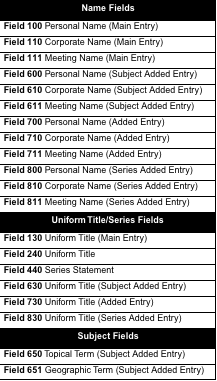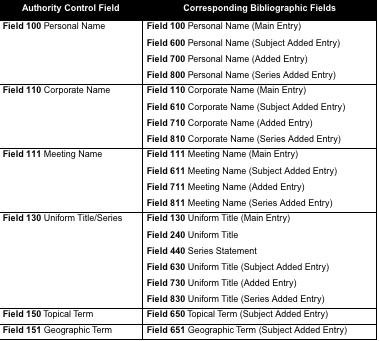Authority Control is essential for truly effective searching of your collection. It is a system that maintains consistency in terms when cataloging names, subjects, and uniform titles/series in your collection. It also provides interconnecting links among these headings (also known as See and See also references).
By selecting one consistent standard for your headings, your patrons can find all works on a specific topic with one single search. They can also find related works with the same search. For catalogers, Authority Control provides a standard to follow when cataloging authors, subjects, and uniform titles/series.
For example, how would you catalog the subject (MARC field 650 – Topical Term) for a book titled The History of the Porsche? Would you enter Cars or Automobiles? Although both subjects sound correct, there is only one correct subject heading for this title, according to the Library of Congress. The correct subject is known as the “established heading” or the “authorized heading.”
In the example above, Automobiles is the correct subject heading. This is the heading that needs to be in your subject field (MARC field 650 – Topical Term) when cataloging this title. Cars is considered the “unestablished heading” or “unauthorized heading.” It is not the correct heading for your subject field.
However, there is the possibility that patrons will enter Cars when searching for this book in your OPAC. Without Authority Control, they would not find this book, since your cataloger entered Automobiles as the subject. With Authority Control, your patrons would be directed to the book with a See Automobiles cross-reference.
Using Cross-References
In Authority Control, there are two types of cross-references: See and See also.
• A See reference is a link from an unestablished heading to the established heading; the patron is being directed to the correct subject.
• A See also reference is a link from an established heading to other related established headings. In the Automobiles example, a patron might see the cross-reference See also Transportation if you have other titles in your collection concerning this subject.
Bibliographic Fields under Authority Control
Not all fields in a bibliographic record are governed by Authority Control rules. Those fields that are not open to subjective interpretation are not under Authority Control. For example, there is only one way to catalog the title of a book (MARC field 245 – Title) but multiple ways to catalog an author’s name (MARC field 100 – Personal Name).
The bibliographic fields under Authority Control are those fields that could be cataloged in a variety of ways — any fields involving names, subjects, and uniform titles/series. Table 1 lists the bibliographic fields under Authority Control.
TABLE 1
Linking Bibliographic Fields to Established Headings
For bibliographic fields to be under Authority Control, a link must be created between the bibliographic field and the correct Authority Control definition for that field (that is, the established heading). In M3, this link is performed by the authority table.
The authority table is where authority records are stored. Authority records are very similar to bibliographic records; they also contain fields and subfields. For every bibliographic field under Authority Control, there is a corresponding authority record containing the established heading for that field. The established heading is in a specific field within the authority record.
In M3, the bibliographic fields under Authority Control are linked to their appr priate authority records through a process called verification. This process is described in “Step 4: Verify Your Bibliographic Records” and can be performed at any time.
Table 2 lists the authority fields within an authority record that are used for established headings, along with the corresponding bibliographic fields. The bibliographic fields link to these fields in an authority record to obtain the established heading.
TABLE 2


